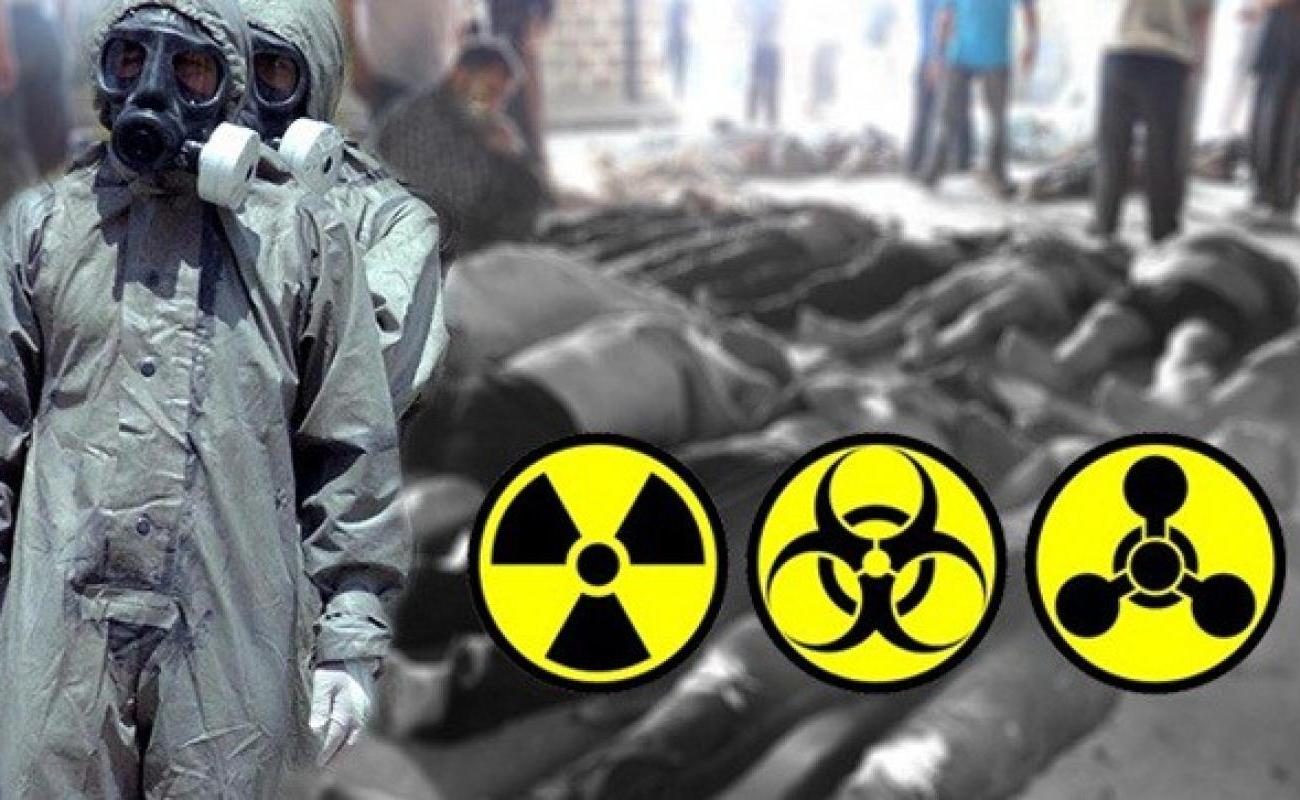Ukraine: What are chemical weapons and could Russia use them?

Russia called a special emergency meeting of the UN Security Council on Friday to discuss its claims Ukraine plans to develop biological weapons. This has been dismissed by Ukraine and the US as a "false flag" - a claim intended to justify Russia's possible use itself of a chemical weapon against cities in Ukraine.
Ukraine does have laboratories, legitimately, where the government says scientists have worked on protecting the population from diseases like Covid. Given that Ukraine is now in a state of war, the World Health Organization (WHO) has asked Ukraine to destroy any dangerous pathogens in its laboratories.
So what exactly are chemical weapons and how do they differ from bio-weapons?
Chemical weapons are any kind of munitions that carry toxins or chemical substances that attack the body's system.
There are different categories of chemical weapons. Choking agents like phosgene attack the lungs and respiratory system, causing the victim to drown in their lungs' secretions. There are blister agents, like mustard gas, which burns the skin and blinds people.
And then there is the most lethal category of all: nerve agents, which interfere with the brain's messages to the body's muscles. A tiny drop of these can be fatal. Less than 0.5mg of VX nerve agent, for example, is enough to kill an adult.
All of these so-called chemical agents can be used in warfare in artillery shells, bombs and missiles. But all are strictly prohibited by the Chemical Weapons Convention of 1997, signed by the vast majority of nations, including Russia. The global watchdog for chemical weapons is in the Hague, Netherlands, and is called the OPCW - the Organisation for the Prohibition of Chemical Weapons - which monitors the unlawful use of these weapons and tries to prevent their proliferation.
They've been used in war in the past - in World War One, in the Iran-Iraq war in the 1980s and more recently by the Syrian government against rebel forces. Russia says it destroyed the last of its chemical weapons stocks in 2017 but since then there have been at least two chemical attacks blamed on Moscow.
Red line crossed
The first was the Salisbury attack of March 2018 when a former KGB officer and defector, Sergei Skripal, was poisoned along with his daughter by the nerve agent Novichok. Russia denied responsibility and came up with over 20 different explanations for who could have done it.
But investigators concluded it was the work of two officers from Russia's GRU military intelligence and as a result 128 Russian spies and diplomats were expelled from several countries. Then, in August 2020, the prominent Russian opposition activist Alexei Navalny was also poisoned with Novichok and narrowly escaped death.
So would Russia use chemical weapons in Ukraine?
If Russia were to use weapons like poison gas in its war, this would be seen as crossing a major red line, most probably prompting calls for the West to take decisive action.
There is no evidence that Russia used these weapons while helping its ally defeat rebels in Syria but it provided massive military support for the regime of Bashar al-Assad who allegedly carried out dozens of chemical attacks on his own people.
The fact is that if you have a protracted war where the attacking military are trying to break the will of defending forces then chemical weapons are, unfortunately, one very effective way to achieve that. It's what Syria did in Aleppo.
Meanwhile, biological weapons are different from chemical weapons. It's a phrase use to describe the weaponisation of a dangerous pathogen such as Ebola.
The problem is there is a potentially a grey area between working on ways to protect your population from harmful pathogens, and secretly working on how they could be used as a weapon. Russia did not produce any immediate evidence of Ukrainian misdoings in this area. But it called for an emergency UN Security Council meeting on Friday to discuss its claims.
Russia, when it was part of the Soviet Union, controlled a truly massive biological weapons programme, run by an agency called Biopreparat. that employed about 70,000 people.
After the end of the Cold War, scientists went in to dismantle it. They found the Soviets had mass produced and weaponised anthrax, smallpox and other diseases after testing them on live monkeys on an island in southern Russia. They had even loaded anthrax spores into the warheads of long-range inter-continental missiles aimed at Western cities.
Finally, in this grim roll call of non-conventional weapons, there is the "dirty bomb" - a normal explosive that is surrounded by radioactive elements. It is known as an RDD - a radiological dispersal device. It could be a conventional explosive carrying a radioactive isotope such as Cesium 60 or Strontium 90.
It wouldn't necessarily kill any more people than a normal bomb, initially at least. But it could render a huge area - potentially the size of an entire London borough - uninhabitable for weeks, until it had been fully decontaminated.
A dirty bomb is almost like a psychological weapon, designed to cause panic among a population and undermine the morale of a society. We haven't seen it used much in war. This is partly because it is both dangerous and difficult to handle, exposing the user to personal risk.
